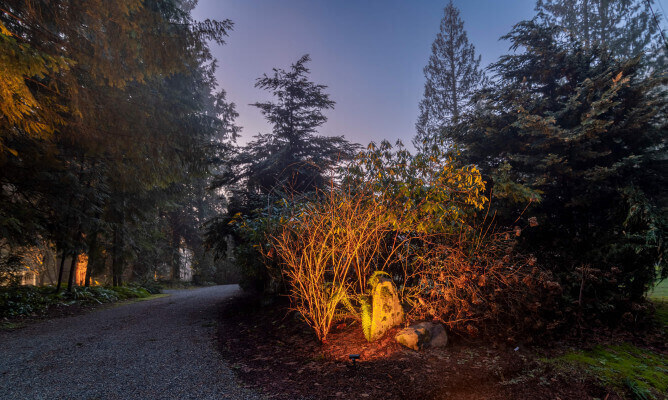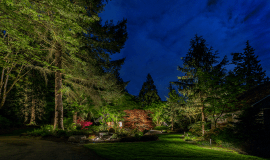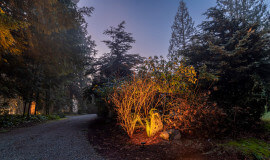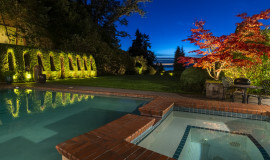Best Outdoor Color
At Northwest Outdoor Lighting, we often find that clients take for granted the type of bulbs and wattages they buy at either a local hardware store or their favorite home store. Who can blame them? We’re all busy, and often overwhelmed by the selection or distracted by the rush to get things done, so people often just grab whatever bulbs are there. As a result, we miss out on an important part of the way we experience our homes – especially when it comes to color outdoor lights.
But the way you choose to illuminate your landscaping and architectural features can really change when you start to think through the ways color and intensity can affect, highlight, or even magnify your home’s magnificent potential.
We’ve heard it time and again from our clients:
“I never thought color tone and wattage intensity would make such a difference.”
Maybe not, but when lighting your home you will find that color tones make a huge difference; they certainly do for us! This is why hiring a professional is worth the price. Read more about why hiring a professional is a smart choice.
Color Tones explained practically
There are many color tones associated with bulbs, and they each have their function. How to find the best outdoor color? What is the best led color for outside? It can be confusing for the average individual to understand how to coordinate them. Simply put, when it comes to color schemes and quality of color outdoor lights, all the colors should match – not just in terms of lights, but even in interior design. There is a dramatic difference in color tones between the kitchen and the living room, the workshop and the ambiance of the outdoor living space; you want to make sure that these spaces are all well-coordinated with your color choices and design philosophy to create truly breathtaking environments.
As just one simple example, white bulbs have many levels of intensity, and you need to understand the differences and the different needs for each. If I were to light my workshop area, I would use a fluorescent bulb with a bright white color tone. These lights are used to perform precise or even potentially dangerous tasks. I might choose to use the same combination of light and color in my kitchen. However, the same light and color tone in my living room would not inspire me to relax and sit down to read a book; it’s too harsh!
At the same time, you would not want these lights to have differing color tones in the same room for the same function. Could you imagine an evening in the living room with each lamp having a different color tone? The effect would start to bother you subconsciously, even if you didn’t understand the problem. It’s subtle, the same way your eye picks up on a piece of thread dangling on a jacket or your pants.
Most of our residential clients are looking for color outdoor lights to add a touch of ambiance to their outdoor living spaces, and most usually choose white as their color. As a result, Northwest Outdoor Lighting recommends a warm color tone (specifically 2,700K to 3,200K). This applies to ALL lights on the outside of your residence, such as carriage lamps, entry lamps and obtrusive flood lamps. When your property is lit correctly, the best outdoor color lights have the same consistent color tone, which creates a pleasing overall ambience that your eye will pick up on, even subtly.
In a few cases, some clients might prefer a bright white light rather than a subtle one (for example, clients whose primary desire is security conscious lighting). A mid-century modern or contemporary home, for example, could be dramatically lit with warm white, bright white/blue tone or possibly multi-colored lights. More colorful choices can also create stunning results.
We’ve included some images below of some color charts that you can use to learn more about this crucial design element. Take a look at the different ways that light, color and design interact with each other; what effect do you want your home to have?
Want to talk about color and the role it can play in your home? Contact us today!
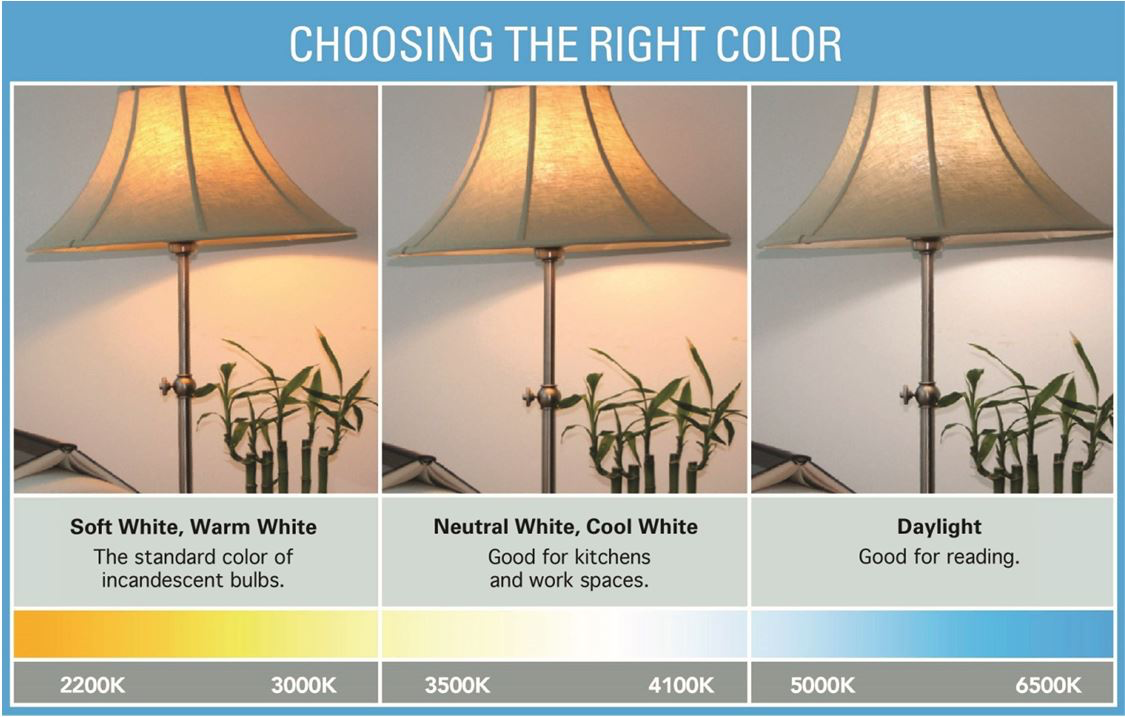
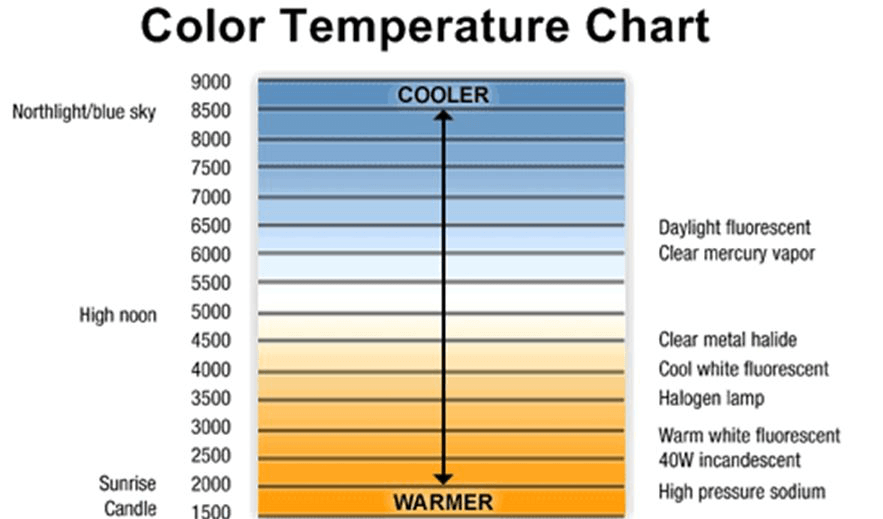
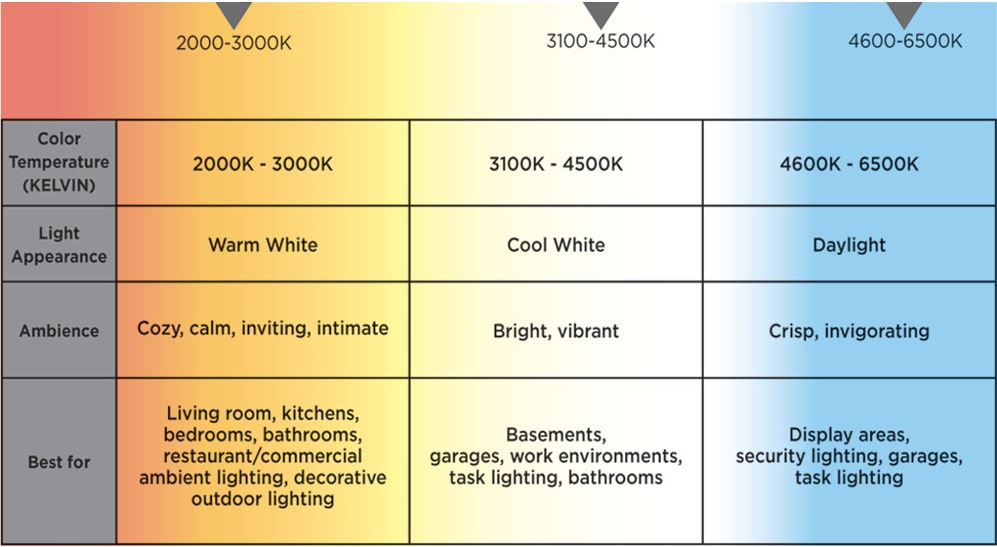
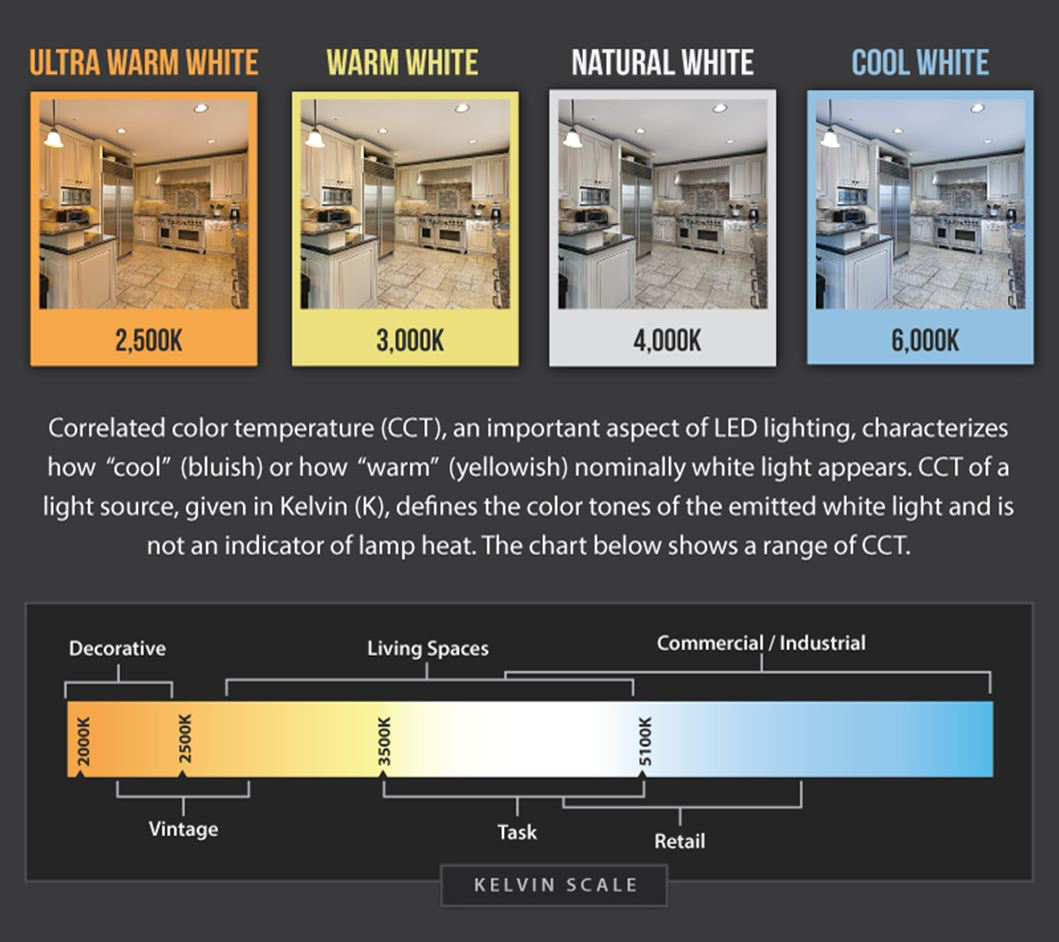
Images courtesy of Houzz.com, Bulborama, and Detroit News.

